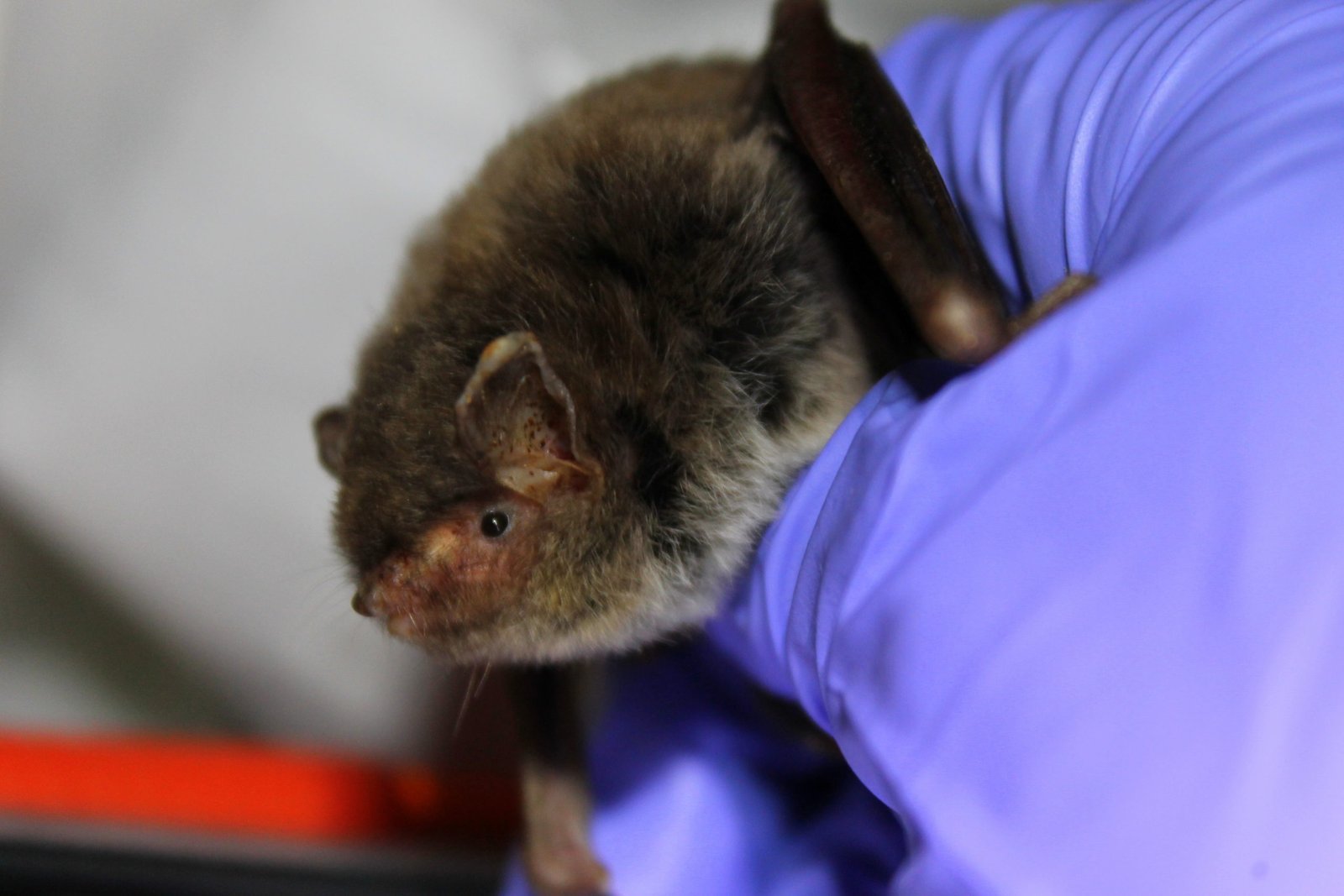Southeastern Myotis: Myotis Austroriparius

The Southeastern myotis, a medium-sized bat, weighs 5 to 12 grams and has gray to brown dorsal fur with yellowish to white belly fur. In caves, the Southeastern myotis usually forms colonies, but in hollow trees, bat houses, buildings, bridges, and culverts, colonies have been found.
Learn More: North American Bats
Physical Characteristics Of The Southeastern Myotis
Myotis austroriparius is a small, thick, woolly-fur insectivorous bat, shorter than that found in many similar species. The fur at the base is dark, and the tips are whiteish. In late summer, it molts, shedding a lighter coat for a darker gray. The color variation may depend on the molt, which is correlated with the individual’s reproductive status. The coloring is also affected by ammonia fumes in large caves.
The southeastern bat is distinguished by its unusually long toe-hairs, which extend past the ends of his claws, from other myotis bats. It’s got a big hindfoot (10 to 12 mm long). Its calcar is not keeled, and it has a short, blunt tragus. It has a pinkish, bare nose. The sagittal crest is low and can be felt through the skin. 1Go To Source animaldiversity.org -“Myotis austroriparius southeastern myotis”
Southeastern Myotis Size
- Total Length: 77-89 mm (Male) 80-97 mm (Female)
- Forearm: 33-40 mm (Males have slightly longer forearms)
- Wingspan: 238-270 mm
- Tail: 26-44 mm
- Weight: 5.1-6.8 g (Male) 5.2-8.1 g (Female)
Behavior Of The Southeastern Myotis Bat
The timing of mating in southeastern myotis occurs in autumn, and about 90% of females give birth in late April or mid-May. This species is distinctive and generally gives birth to twins.
During the first few weeks of life, the young are more altricial than other species and experience higher mortality. At the age of five to six weeks, the young are capable of flight, and maternal roosts are usually located in water-containing caves or basal tree hollows.
Southeastern Myotis Range
This species occurs throughout the southeastern Coastal Plains and along the Mississippi River. Southeastern myotis have been seen in bottomland habitats as far north as Indiana and Illinois.
Southeastern Myotis Diet
In-flight, the southeastern myotis captures prey, and their diet consists mostly of mosquitoes and crane flies but may include moths and beetles as well.
Habitat Of The Southeastern Myotis Bat
This bat uses a range of roost sites, typically roosting in clusters of ten to a few hundred or more across its range.
Southeastern Myotis roosting occurs throughout the year, typically hibernating in caves, often in conjunction with Indiana bats. Some continue to roost in caves from about mid-April through late October, but many may move to cavities in large, hollow trees. Bottomland habitats, often near water, attract this bat species.
It is believed that southeastern bats forage primarily over lakes, ponds, and slow-moving streams and fly close to the water’s surface. 2Go To Source biology.eku.edu -“Southeastern myotis (Myotis austroriparius)”
Southeastern Myotis Species Conservation
The degradation of mature bottomland hardwood forests because of agricultural conversion and urban expansion is one primary threat to the southeastern myotis. The amount of suitable summer roosting and foraging habitat for the species has been dramatically reduced by habitat alteration. Even the clearing of mature upland forests is considered a danger.
The southeastern myotis bat is also subject to human disturbance as the species can use caves as hibernacula or maternity sites. Excessive human visitation can awaken hibernating bats, causing the bats to use up significant reserves of fat. Maternity site disruption can cause the bats to move to a less suitable site.
White-nose syndrome is found to affect the southeastern myotis. This devastating disease has caused unprecedented mortality in some hibernating bat species, particularly in the northeastern United States. 3Go To Source fw.ky.gov -“Southeastern Myotis (Myotis austroriparius)”
Sources:
- Gomoll, S. 2004. “Myotis austroriparius” (On-line), Animal Diversity Web. Accessed December 30, 2020 at https://animaldiversity.org/accounts/Myotis_austroriparius/
- “Southeastern Myotis.” EKU, Kentucky Bat Working Group, biology.eku.edu/bats/semyotis.html. Accessed 30 Dec. 2020.
- “Kentucky Department of Fish & Wildlife Southeastern Myotis.” Kentucky Department Of Fish & Wildlife Resources, KW, fw.ky.gov/Wildlife/Pages/Southeastern-Myotis.aspx. Accessed 30 Dec. 2020.
